Highlights of Bhutan
6 Nights/ 7 Days in Bhutan
Welcome to Kingdom of Bhutan:
The Kingdom of Bhutan is a tranquil country where you can explore the ancient cultures, beautiful landscapes and magnificent architecture. Located in the high Himalayas, Bhutan is a landlocked, Buddhist kingdom that is well-known for its dramatic, mountainous landscapes, beautiful monasteries, and rich cultural traditions, Bhutan is filled with tangible examples of its extraordinary culture, from the striking architecture of its mountain forts and monasteries to the images of Buddhist religious figures painted or carved onto the craggy cliffs.
Outlined Itinerary
|
Day 1: Arrive Paro & Transfer to Thimphu
The flight to Paro is one of the most spectacular in entire Himalayas. Flying along the Himalayan the journey offers fascinating views and an exciting descent in Kingdom. The flight into Bhutan takes you close to the great Himalaya, offering dazzling scenic views of some of the world’s highest glacial peaks.
As you exit Paro airport, you will be met by your guide and chauffeured to your hotel in Thimphu (1 hour drive). The capital of the Bhutan, Thimphu is a unique city with unusual mixture of modern development alongside ancient traditions. Situated at 7656 ft. above sea level, with the population of over 100,000 it is perhaps, the only national capital city in the world to not have any traffic lights.
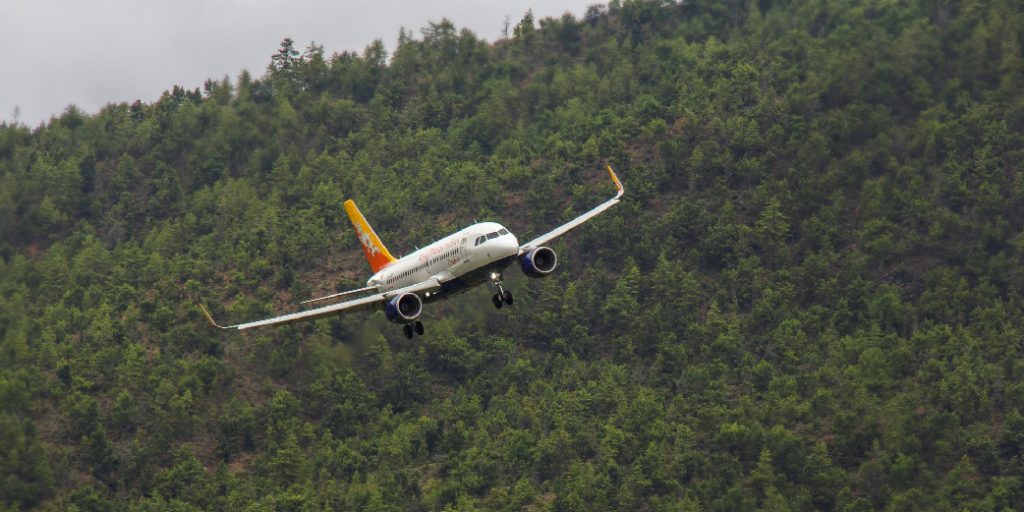
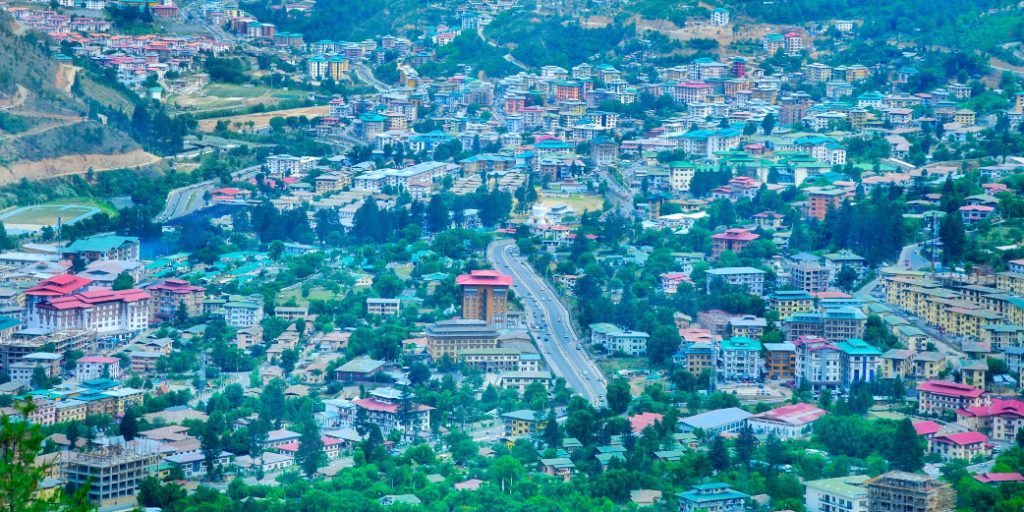
En-route stop to visit the Tamchog Lhakhang; built by Thangtong Gyalpo, a pioneering engineer who introduced the construction of suspension bridges into Bhutan and Tibet. It is believed that more than 58 bridges were built across the country however only 2 have survived. One of these bridges still stands strong at the base of the Tamchog Lhakhang. Marvel at the iron bridge reconstructed using original chain links.
Drive onwards to your hotel for check in and a short rest.
Post lunch, you will visit the National Memorial Chorten. The stupa built in the memory of Bhutan’s third King, His Late Majesty, King Jigme Dorji Wangchuk, who is popularly regarded as Father of modern Bhutan. The paintings and statues inside the monument provide a deep insight into Buddhist philosophy.
Followed by drive to visit the Royal Takin Preserve is a protected area where the national animal of Bhutan, Takin, is preserved. The Royal Takin Preserve is located just 10 minutes away from Thimphu city. Originally a zoo, the fourth king decided to disband it since keeping animals in cages did not align with Bhutan’s environmental and religious beliefs. The animals were released into the wild, however the takin were too tame to survive, and wandered around the streets of Thimphu. This led to the making of the Royal Takin Preserve. Now the animals are kept in a large enclosure where visitors can observe them.
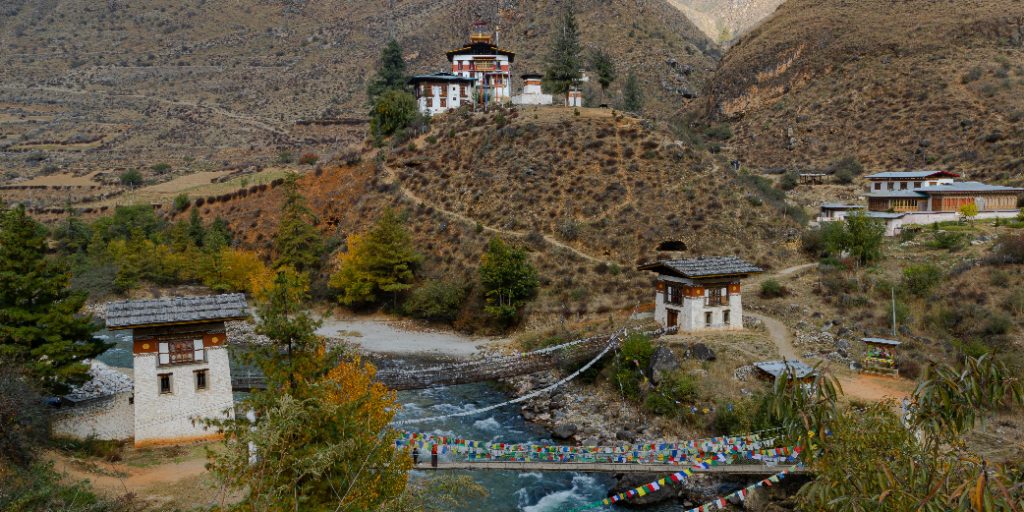
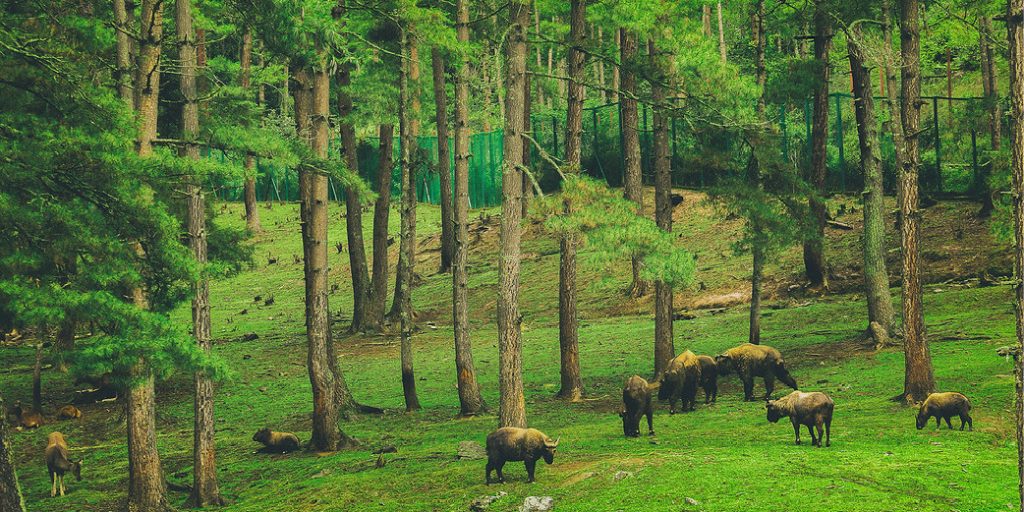
Day 2: In Thimphu
Post breakfast, you will drive to Buddha Dordenma – a gigantic Shakyamuni Buddha statue is filled with over 100,000 smaller Buddha statues, each like the Buddha Dordenma itself, made of bronze and gilded in gold. The statue fulfils an ancient prophecy dating back to the 8th century CE, discovered by Terton Pema Lingpa, the Religious Treasure Discoverer of the time. It is said to bring peace and happiness to the entire world.
From here, you will hike on a trail that will take you through a beautiful forest patch towards Changangkha Lhakhang. The hike provides magnificent views of the Thimphu valley below. This trail is often used by His Majesty the fourth king as his mountain biking trail.
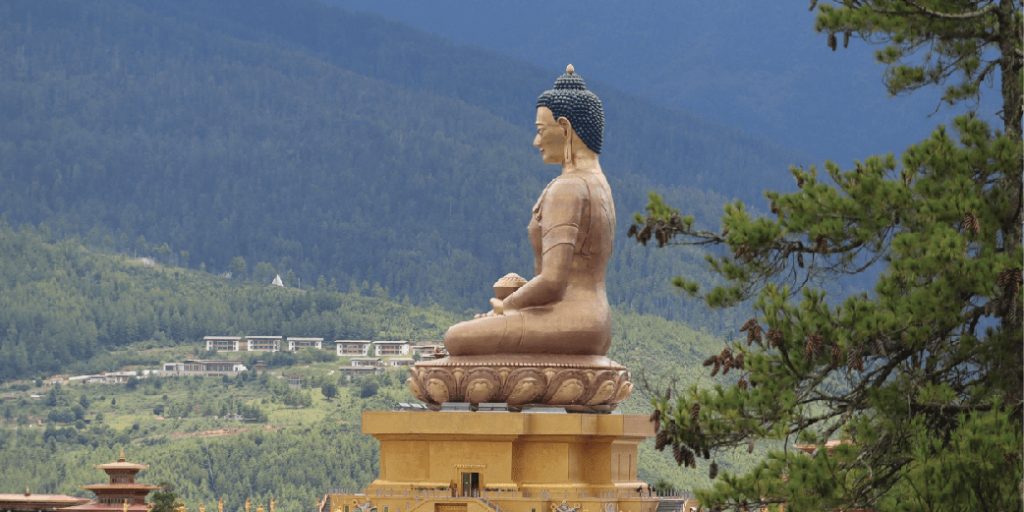
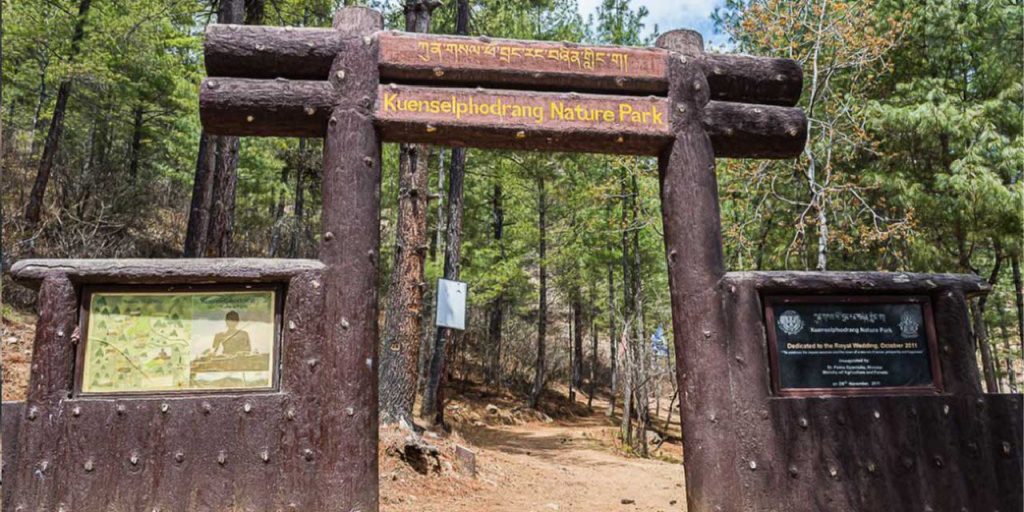
Return to the hotel for lunch.
Post lunch, you will visit the National Institute for Zorig Chusu, commonly known as Arts & Crafts School or Painting School. The Institute offers a six year course on the 13 Traditional Arts and Crats of Bhutan. On a visit, can enjoy looking at the unique arts and crafts of Bhutan that have symbolic meaning to the country. You can witness the impressive skill and discipline young students showcase.
Next, visit the Royal Textile Academy. Weaving is an integral part of the culture and tradition of Bhutan. With the aim to conserve, restore, and document this living art, the Royal Textile Academy of Bhutan was set up by the queen mother, Her Majesty Ashi Sangay Choden Wangchuck as a non-government, non-profit, organization. Inaugurated in 2001, the academy is also a national centre for educating young students in textiles, fabric design and museum studies. It serves as a centre for tourists, introducing the nation’s masterpieces to its visitors, while preserving Bhutan’s weaving traditions.
Followed by a visit to Tashichho Dzong, also known as “Fortress of the Glorious Religion”, an impressive large structure, surrounded by well-maintained lawns and beautiful gardens. Completed in 1641, this magnificent fortress contains the main secretariat building, which houses the throne room of His Majesty, the King of Bhutan. The Dzong also functions as a summer residence for the central monastic body.
Later in the evening, you will stroll around the Authentic Bhutanese Craft Bazaar which is located right next to Norzin Lam. It is an excellent venue to get a peek of Bhutanese art and craft.
Then continue to walk towards Kaja Throm which is a farmer’s market. While strolling around the market, you will get a chance of knowing best of what locals have to offer to visitors.
Spend overnight at Hotel in Thimphu.

Day 3: Thimphu to Punakha
This morning, you will drive to Punakha (3 hours’ drive) across Dochu La Pass (3,080 m). Dochu La Pass offers the most spectacular views of the snow-capped eastern Himalaya range in the winter along its path, linking the city of Thimphu and Punakha. Visit the Druk Wangyal Lhakhang, the temple build in honour of Wangchuck Dynasty and for the 60th Birth Anniversary of Fourth King of Bhutan.
Stop on Dochu La to visit the 108 stupas to honor the fallen Bhutanese soldiers.
Before reaching Punakha, stop en route and hike to Chimi Lhakhang. Perched on a hill in the centre of the valley, Chimi Lhakhang is a temple dedicated to Lama Drukpa Kuenley. Also known as the ‘Divine Madman’. Chimi Lhakhang is widely known as the temple of fertility; locals come here to receive blessings from the lama. They pray and ask to be blessed with a child. Locals also bring their newborns to be named here. The lhakhang is about a 30-minute walk through fields from the main road.
Afterwards, drive to hotel check in and lunch.
Later in the afternoon, drive to visit the Punakha dzong. Constructed in 1637, this was the second dzong to be built in Bhutan, and for many years served as its seat of government. Widely referred to as the most beautiful dzong in the country, the towering white walls form a lovely contrast to the surrounding greens and blues. It is the winter residence of the central monastic body, and holds a very important relic over which many wars were fought with the Tibetans. All of Bhutan’s kings are crowned here before they can take their throne in Thimphu. The dzong’s magnificence is especially striking in the spring when the lilac-coloured jacaranda trees are in full bloom.
Drive back to hotel for restful evening.
Spend overnight at Hotel in Punakha.
Day 4: In Punakha
Early this morning, you will begin your hike to the Khamsum Yuelley Namgyal Chorten, which sits majestically on above Punakha valley with an amazing view of the countryside and the hills below. It was built by the Queen Mother to ward off evil forces and bring peace and harmony for all living beings. It is one of the finest examples of Bhutanese architecture. Built for the protection of the country and the present King.
After your hike, you will hike back to hotel for a short rest.
Early this morning, you will begin your hike to the Khamsum Yuelley Namgyal Chorten, which sits majestically on above Punakha valley with an amazing view of the countryside and the hills below. It was built by the Queen Mother to ward off evil forces and bring peace and harmony for all living beings. It is one of the finest examples of Bhutanese architecture. Built for the protection of the country and the present King.
After your hike, you will hike back to hotel for a short rest.
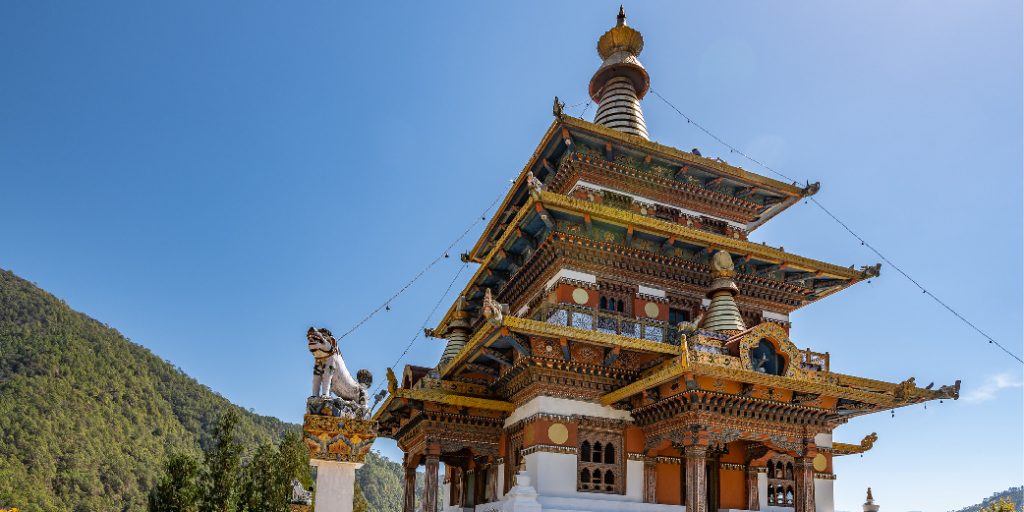
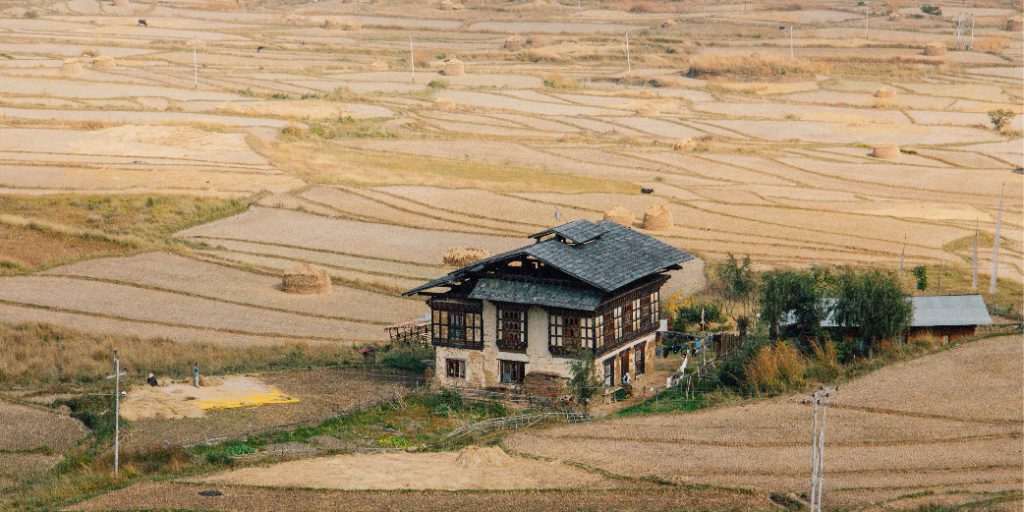
Afternoon, drive to visit the Sangchhen Dorji Lhuendrup Lhakhang Nunnery. Perched on a ridge overlooking Toebesa, Punakha and Wangduephodrang valleys. The temple houses a 14-foot main bronze statue of Avalokiteshvara (Chenrigzig chagtong chentong). Other statues include those of Guru Padmasambawa, Gautama Buddha, Zhabdrung Ngawang Namgyel, Tsela Namsum, the 21 Taras and Tsepamay (Buddha of longevity). The complex also houses a permanent higher learning and meditation centre for nuns where, apart from religious trainings, it provides life skill training such as tailoring, embroidery, statue making and thangka painting.
Followed by a visit to Kaja Throm (farmer’s market).
Drive back to hotel for restful evening.
Spend overnight at Hotel in Punakha.
Day 5: Punakha to Paro
Today after breakfast, you will drive to Paro (4-5 hours’ drive).
Paro is a historic town, situated at 7382 ft. with many sacred sites and historical buildings scattered through the area. It is home to many of Bhutan’s oldest temples and monasteries, the National Museum and the country’s only airport. Mt Jhomolhari (7326 m /24035 ft) reigns in its white glory at the northern end of the valley. The city is known to be situated at the height of about 2280 metres on the banks of Paro Chu river, which is spread across an area of 1259 sq.m. The Paro Chhu river is the lifeline of Paro, adding a glorious touch to it.
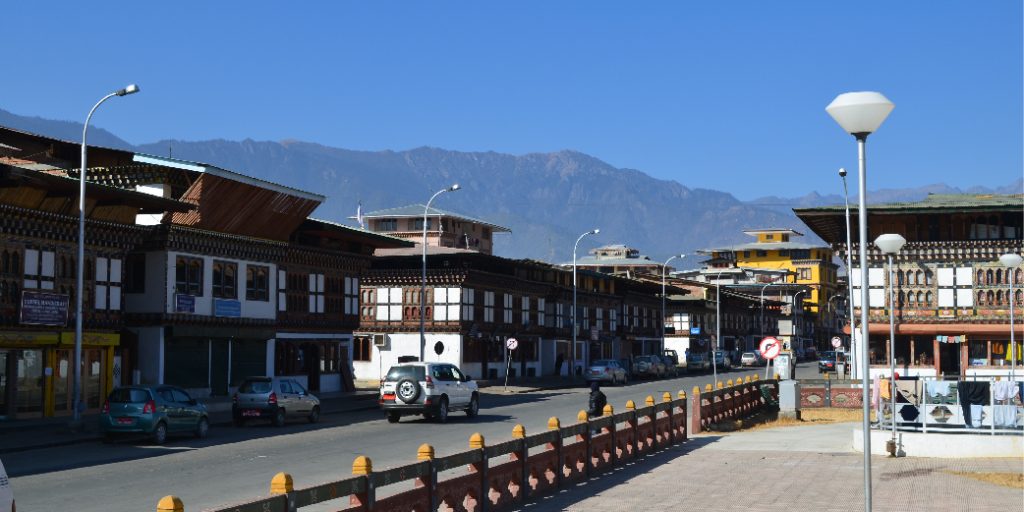
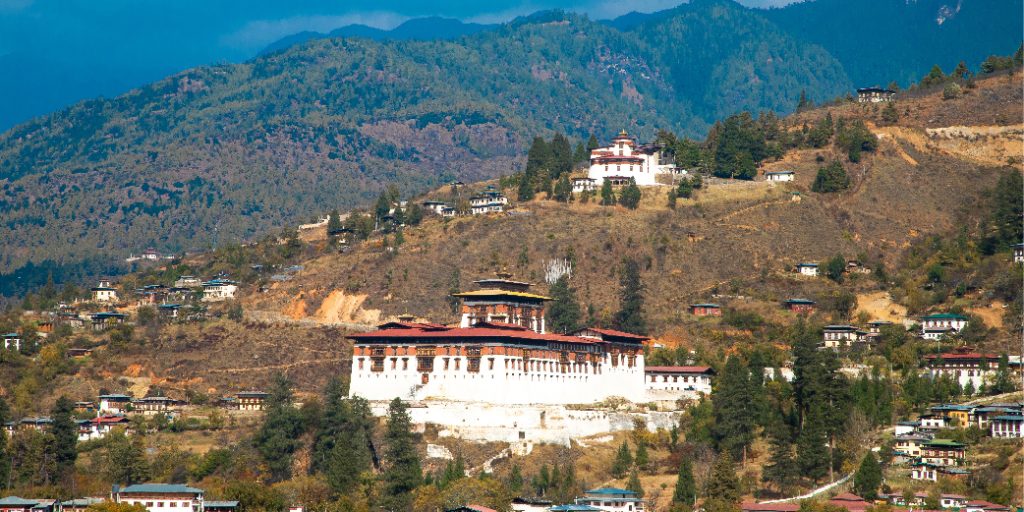
On arrival, check-in to your hotel.
Post lunch visit the Ta Dzong; a watch tower built to defend Rinpung Dzong during the inter-valley wars of the 17th century. Since 1967, the Ta Dzong has been serving as the National Museum of the country. It holds a fascinating collection of art, relics, religious thangka paintings, natural history, and Bhutan’s exquisite postage stamps. The building’s circular shape comes from its defensive origin.
Followed by a short drive to visit Rinpung Dzong, meaning (“fortress of the heap of jewels”), which has a long and fascinating history. Along the wooden galleries lining the inner courtyard are fine wall paintings illustrating Buddhist lore such as fouer friends, the old man of long life, the wheel of life, scenes from the life of Milarepa, Mounts. Sumeru and another cosmic Mandala.
Later in the evening drive to visit the Namgay Artisanal Brewery. Set in a traditional Bhutanese style, the place is beautifully located overlooking the Paro valley. This place brews different flavours of Bhutanese Beer to suit one’s palette.
Spend overnight at Hotel in Paro.
Day 6: In Paro
This morning, drive to Ramthankha, and start your hike to the Taktsang monastery (Tiger’s Nest), one of the most prominent Buddhist sites in Bhutan. The trail climbs through a beautiful pine forest, many of the trees festooned with Spanish moss and an occasional grove of fluttering prayer flags. It is said that Guru Rinpoche, founder of Buddhism in Bhutan flew from eastern Bhutan on a tigress, bringing Buddhist teachings and meditation here on this cliff. This site has been recognized as a most sacred of all Buddhist sights around the world. This hike takes about five hours with a 900 m (2952 ft) approximate gain in altitude.
Afterwards hike down to the car park before returning to the hotel.
On your way back to hotel, visit the 7th century Kyichu Lhakhang, one of the 108 temples built in the Himalayas by Buddhist King, Songtsen Gampo. The building of this temple marks the introduction of Buddhism in Bhutan.
Spend overnight at Hotel in Paro.
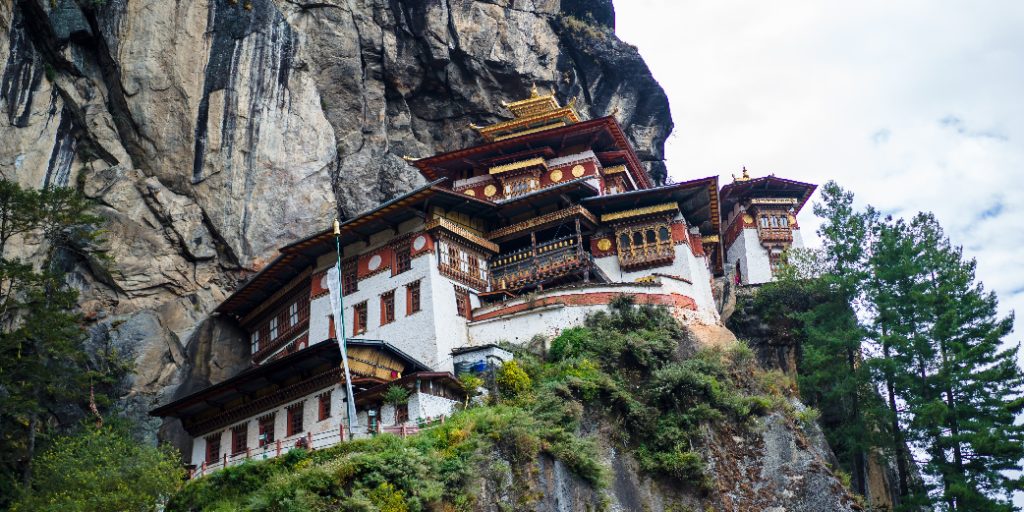
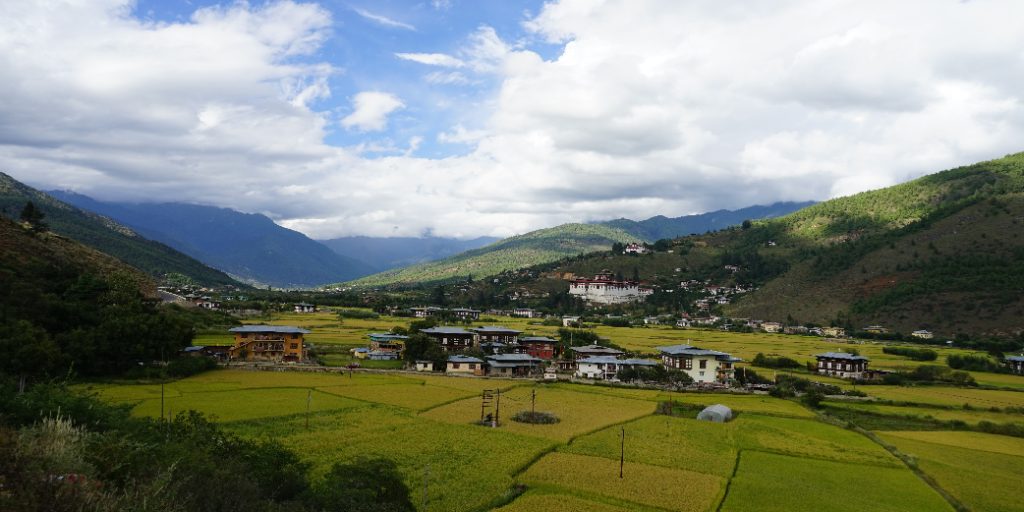
Day 7: Paro/ Departure
This morning drive to Paro airport to board your flight to onward destination.

This morning drive to Paro airport to board your flight to onward destination.
